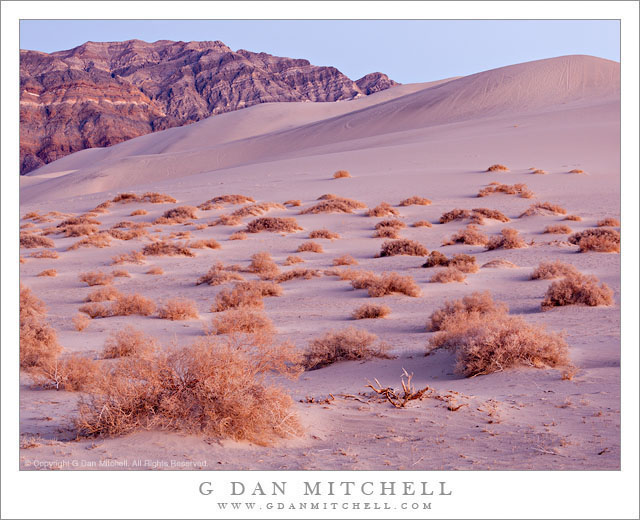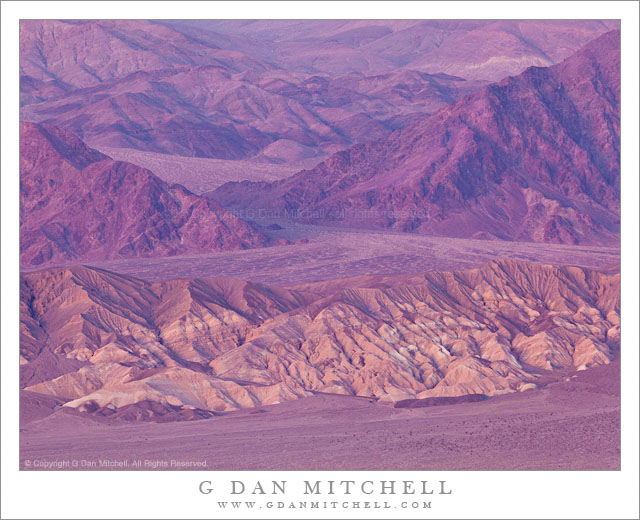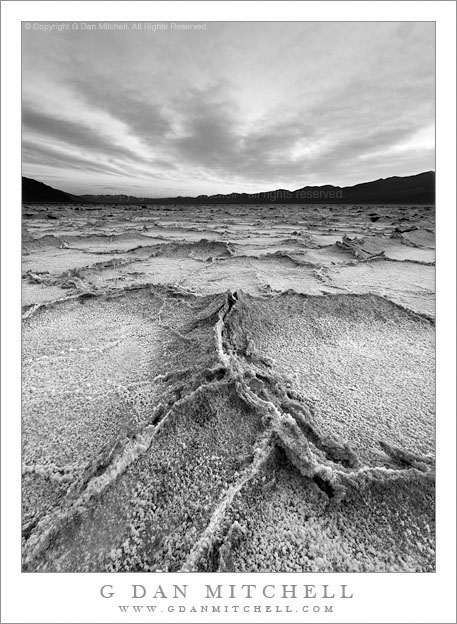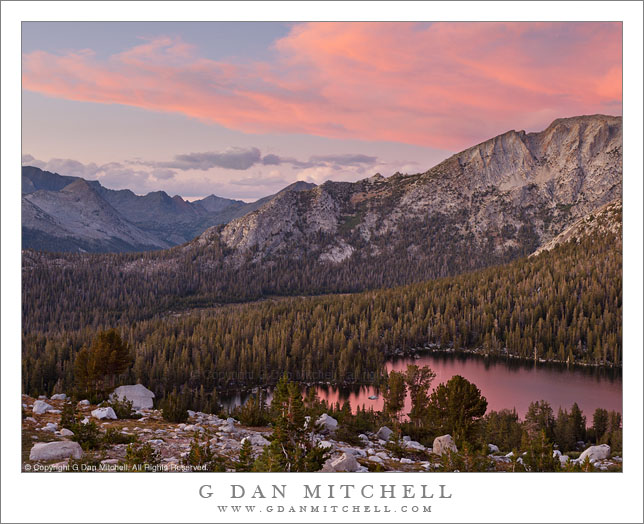Eureka Valley Dunes, Dusk. Death Valley National Park, California. January 5, 2012. © Copyright 2012 G Dan Mitchell – all rights reserved.
Pink dusk light on the Eureka Valley Sand Dunes, Death Valley National Park.
On the second-to-last day of my January visit to Death Valley, I decided that it would make sense to exit the park to the north by way of miles of gravel roads heading into the northern portion of the park then out via more gravel and then some paved roads to Big Pine the next day, setting me up to return home over snow-free (in January!) Tioga Pass. After shooting early in the morning I headed back to my camp – at Stovepipe Wells at that time – had some breakfast, took down my camp, and packed. By the time I fueled up my car and headed north, I was a bit behind my planned schedule, but I figured that I might still make it to Eureka Valley in time to shoot in some late afternoon light.
A few hours later, after a drive including over 40 miles of gravel, I finally arrived at the site of these monumental dunes. At nearly 700 feet tall, they are supposedly the tallest dunes in the United States – or is it in North America? Eureka Vally is a lonely place, being a long drive on rough roads from any direction and almost completely without the civilized services found in some other areas of the park. When I got there, a family that had visited was just leaving, and there was one other photographer shooting high up on the dunes. I knew that I didn’t have enough time to try that, so I grabbed my gear and hiked over to one side of the dunes where their lower slopes begin to merge with the flat surface of the valley and where the last sun would hit the dunes. I shot there for a while and after the sun dropped below the ridges to the west I went looking for subjects that might benefit from the post-sunset soft and pink light. Very close to my “campsite” (which was in the back of my vehicle that night!) I saw these plants leading up toward the summit of the dunes and the higher stratified peaks beyond, and I made a few photographs in the rose-colored late light.
G Dan Mitchell is a California photographer whose subjects include the Pacific coast, redwood forests, central California oak/grasslands, the Sierra Nevada, California deserts, urban landscapes, night photography, and more.
Blog | About | Flickr | Twitter | Facebook | Google+ | 500px.com | LinkedIn | Email
Text, photographs, and other media are © Copyright G Dan Mitchell (or others when indicated) and are not in the public domain and may not be used on websites, blogs, or in other media without advance permission from G Dan Mitchell.




